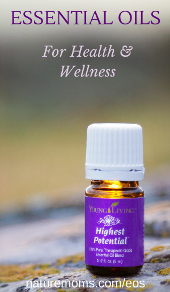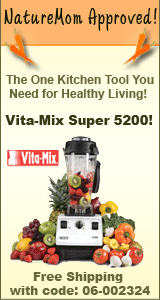 Babies are known for having super soft skin and women everywhere would love to have skin like a baby’s once again. But what if your baby is having some skin problems? What can you do?
Babies are known for having super soft skin and women everywhere would love to have skin like a baby’s once again. But what if your baby is having some skin problems? What can you do?
If your baby is suffering from eczema, you know how uncomfortable the itchy and dry skin can be, not to mention the sore spots. Since eczema usually goes hand in hand with sensitive skin, treating it can be a bit of a challenge. Thankfully there are quite a few home remedies for baby eczema you can try.
Moisturize
Keeping baby’s skin well moisturized should always be the first step in any eczema treatment. Use a natural aloe Vera lotion several times a day, especially after bathing baby. Reapply as often as need to keep baby’s skin from drying out. Avoid any harsh cleansers and make sure baby is getting plenty to drink to moisturize from the inside out as well. Incidentally breastfed babies experience fewer and milder episodes of eczema.
** My children have sensitive skin, and we’ve used this product for over five years with excellent results. We use this California Baby Calendula Cream year-round. In the winter, we like to apply this cream as we pop out of the shower to seal in moisture. It works like a charm!
Oatmeal Bath
When baby’s skin gets very itchy, an oatmeal bath can be very soothing and help skin heal. Put two cups of oats in a food processor (or use a coffee grinder) and grind them into a powder. Add the oatmeal powder to a running bath of warm (not hot) water and stir well. Soak in the oatmeal bath for 15 minutes, rinse with clean water and dab the skin dry with a soft towel. When baby’s eczema breakouts are bad, it is safe to sooth them with an oatmeal bath twice daily.
Natural Skin Wash
As mentioned above, you want to avoid any harsh skin care for baby. The following natural skin wash is very gently and helps with the itch. Combine 1 tsp of comfrey root, 1 tsp of white oak bark, 1 tsp of slippery elm  bark and two cups of water in a bowl. Mix well, and then pour it into a pot. Heat over medium heat until it comes to a boil, and then simmer for thirty minutes. Allow the mixture to cool, then strain out the solids and use the liquid like any face wash.
bark and two cups of water in a bowl. Mix well, and then pour it into a pot. Heat over medium heat until it comes to a boil, and then simmer for thirty minutes. Allow the mixture to cool, then strain out the solids and use the liquid like any face wash.
While this mixture may not completely clear up baby’s eczema, it is a natural, gentle and effective cleanser that will help reduce the itching and inflammation.
** California Baby Shampoo and Body wash was a big favorite when my kiddos were little. Earth Mama Angel Baby also makes a great shampoo and body wash. There is no way we could survive our dry winters without it! **
Healing Lotions
When eczema really flares up, you want to get baby’s skin healed back up as soon as possible. Healing lotions can help shorten the healing time and moisturize and protect your skin from future outbreaks at the same time.
Lotions to look for ate those made with blueberry leaves. Blueberry leaves are very good at relieving the inflammation of eczema and at improving the irritation that accompanies itching.
Zinc is another great ingredient. Apply zinc lotion directly on the affected area. Zinc can also be taken as a supplement in pills. Taking regularly, it can be an effective eczema treatment.
To help heal the skin, use a lotion containing vitamin E, or apply vitamin E oil directly on the affected area. It will quickly reduce itching and improve healing. Continue applying the vitamin E oil until the skin is healed.
This article is provided for information purposes only. Please consult your baby’s health care provider before trying home remedies.
Visit Carriewillard.com to learn more tips that will help you trust your instincts and raise your baby naturally!

And my love for the Prius continues unabated. Every new version that I drive tells me that someday I must own one. Even my husband has come around. I used to get a sideways look of annoyance when I mentioned a Prius, now I get an appreciative nod. My recent week-long test drive of the Toyota Prius Four Touring confirmed for both of us that the Prius represents a luxurious drive, the power to get you where you need to go, and GREAT fuel economy.
Fuel economy is #1 with us so I am happy to report that the 52 mpg they claim on the sticker was right on the money. In a week’s time I never dipped below 50 mpg and I did almost no highway driving. They estimate that with this car you have an annual fuel expense of only $850. That is crazy good and with how little I drive I could probably halve that.
A super nice feature that this particular model has is the Intelligent Clearance Sonar (ICS). I loved it because I use cruise control whenever I can and with the ICS the car would slow down on its own if the space between me and the car in front of me was too small. When proper clearance was achieved it wold speed up again. How cool is that?
I also have say that the interior of this car was stellar. I loved the dark grey with white accents. The Qi-compatible wireless smartphone charging was a new future for me too. All in all it truly felt like a luxury car.
The cons list is short…there is a rear view visibility issue since you are looking through the trunk. Also the trunk contents are completely visible from the outside so no leaving stuff in there. These are not huge issues.
Two big thumbs up for the Toyota Prius Four Touring.

 I am sure by now you have seen that there are many web sites out there that offer you cashback from various online retailers when you shop through them. Basically you go the company site, use their link to click through to Amazon or Best Buy, do your shopping, and get a cashback reward. Essentially these sites are affiliates for all these online retailers and when you go through their site to do your shopping they split the affiliate commission with you, usually 50% of the total commission. It is a nice way to earn a little money back on purchases you already planned to make.
I am sure by now you have seen that there are many web sites out there that offer you cashback from various online retailers when you shop through them. Basically you go the company site, use their link to click through to Amazon or Best Buy, do your shopping, and get a cashback reward. Essentially these sites are affiliates for all these online retailers and when you go through their site to do your shopping they split the affiliate commission with you, usually 50% of the total commission. It is a nice way to earn a little money back on purchases you already planned to make.
I use some of these sites myself when I do my online shopping because every penny that goes back into my pocket furthers my monetary goals. Why not get a rebate of sorts on my Christmas, birthday, and home purchases?? I already comparison shop and look for online coupon codes so earning a commission on my own purchase just makes good “cents”. Plus those coupon codes can be elusive for some stores so getting something back instead of nothing is always good.
A new-to-me site offering this great service is Giving Assistant. It offers some high cashback rates and and they do claim that 100% of the affiliate commission goes to their users. Other comparable sites only offer 50%. It is free to join as well. Another cool aspect, that their name hints at, is the fact that you can donate some or all of your earnings to any charity of your choice. Also a small donation is made to Feeding America to give one meal every time cash back is earned.
So far I find it to be really user friendly. You click on the name of the retailer you want to shop, check their list of coupons codes you may want to use, and then make the final click over to the retailer to do your shopping. Within a day or two you see your cashback earnings in your Giving Assistant account. You get paid direct to your secure debit card in days. No months of
waiting for a check in the mail like other cash back sites. The minimum payout is just $5.01, not $25 like the other guys.
Some of my favorite places to shop include:
Etsy (2% cashback)
Honest Company (5% cashback)
Tom’s Shoes (7% cashback)
I used Giving Assistant just a couple days ago to buy my daughter some Harry Potter laptop decals and with two days I saw my cashback go into my account. Pretty nifty! I know that this Christmas I will likely make this a regular stop. Try via my referral link and get $5 for signing up!
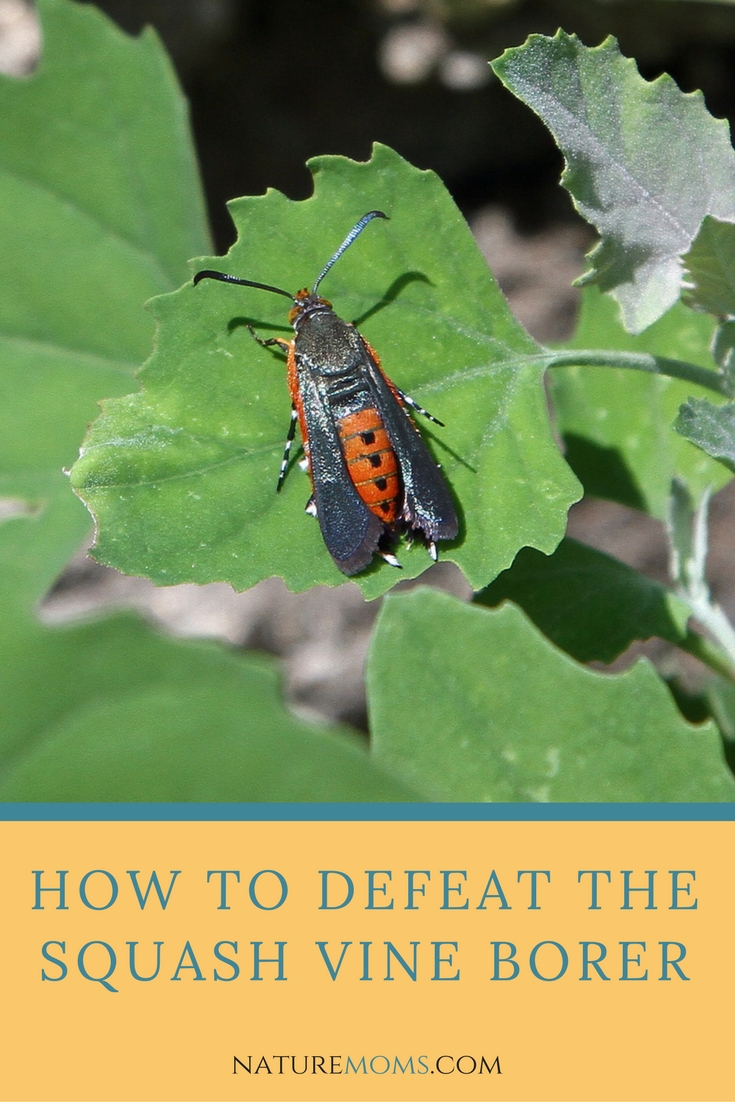 I have been gardening for years and I have dealt with a variety of pests and bugs. I have grown pumpkins for many years and never really had a problem with anything munching on them. Then we moved to our new homestead and I started a new garden in a totally new space. Let’s just say that my first year in our new space has been a real challenge. It has left me wanting to pull out my hair.
I have been gardening for years and I have dealt with a variety of pests and bugs. I have grown pumpkins for many years and never really had a problem with anything munching on them. Then we moved to our new homestead and I started a new garden in a totally new space. Let’s just say that my first year in our new space has been a real challenge. It has left me wanting to pull out my hair.
We had slugs eating our beans and hosta. We had caterpillars eating our cabbage. We had deer eating our tomatoes. We had aphids eating our roses. We had rust disease on our apple trees. We also had squash vine borers eating our squash plants…pumpkins, zucchini, and yellow squash. It was a complete nightmare at times but I did manage to make progress on most of these fronts and next year I am armed and ready. Pests beware!
This post though talks about the infamous squash vine borer. When your squash plants start to wilt and yellow a bit many times you assume they need more water. Except more water doesn’t help. So you take a closer look and you see a sawdust frass around the vines at the base of the plant. It looks as though something is chewing them up and spitting them out. And truth be told something is. The squash vine borer is a moth that lays eggs around the stems of squash plants. Caterpillars emerge and eat into the stalk and with enough feeding damage to the stem, the entire plant can die. The damage they can do is astounding!
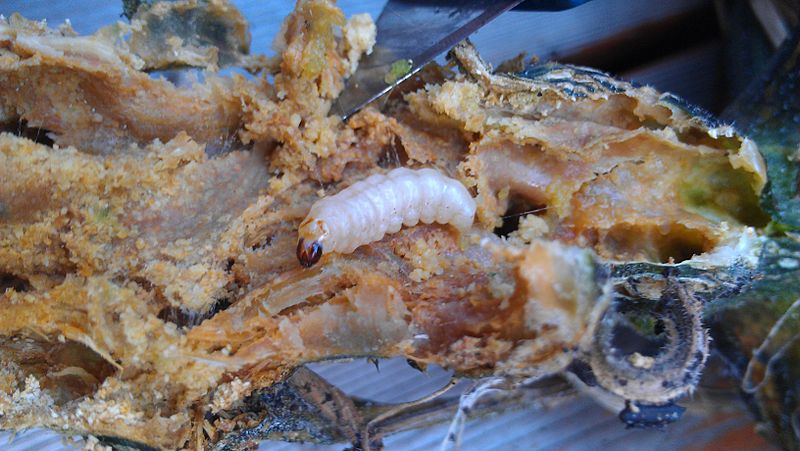
How to Get Rid of the Squash Vine Borer
You need to start with some prevention in the early spring. Most of us buy starts or transplant starts that we grow indoors. You can wrap the stems of your squash seedlings with medical gauze. It is flexible enough to grow with plants but prevents caterpillars from eating into the stems.
Spray your plants with BTK (Bacillus Thuricide). It is a beneficial bacteria that controls the larva stage (caterpillars) of certain moths. It will not harm beneficial insects. I also use it on cabbage and plants in the brassica family who are attacked by moths/caterpillars. You can also spray with Dr. Bronner’s soap. Re-spray both after rain. Wipe down the vines, stems, leaves with a damp cloth to remove bugs and eggs once or twice a week. After spraying dust them with Diatomaceous Earth and create a ring around the plants to create a barrier.
You may want to cover your squash plants right up until they flower with a row cover, a cage, or some kind of gauzy netting that will not give moths access to the plants. Once they flower you will need to remove these impediments so the pollinators can visit.
Lay out yellow bowls full of water. The borer moths are attracted to the yellow and will drown themselves. It kills off some of them and also lets you know they are in the area. Once you spot them you will want to start digging lightly in the soil looking for them in the pupil stage. Kill them on site or give them to your chickens/quail.
Prevention is going to do more than going into attack mode AFTER they have become a problem and your squash plants are dying. Arm yourselves now for next year!
Top image credit: Jim, the Photographer
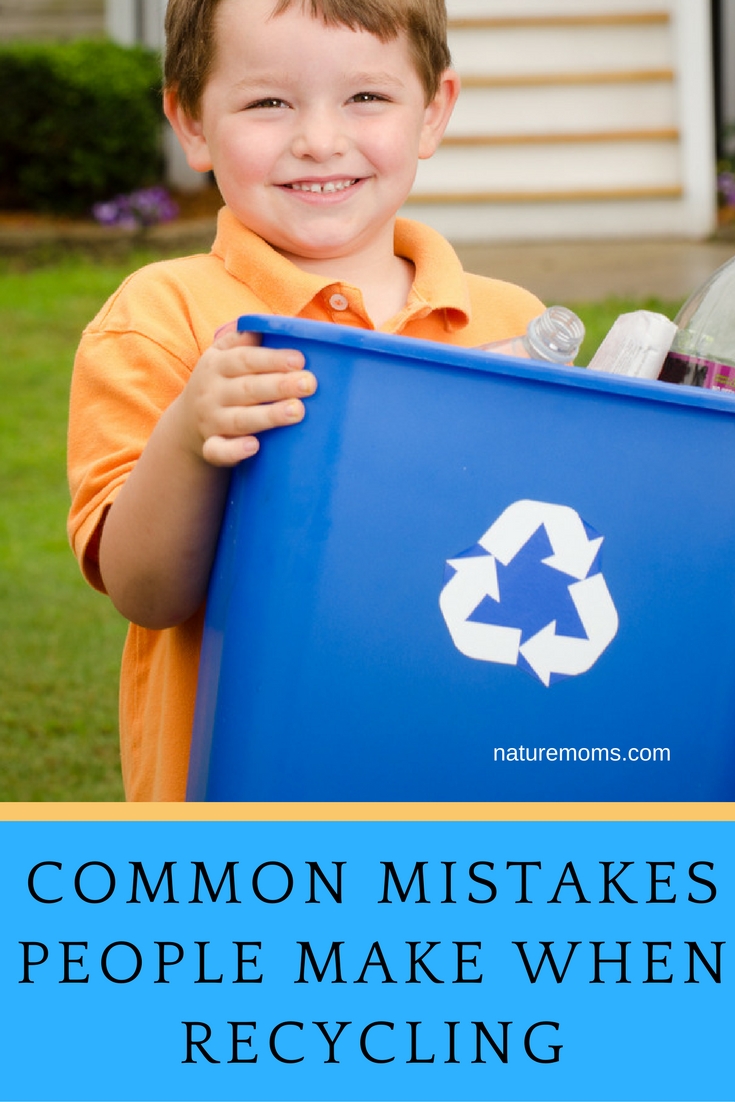 Years ago I lived in a very rural area where we had no city garbage service. This meant no trash pick up and no recyclable goods pick-up and I had to find a private service to haul garbage away. For the first week or so I committed the ultimate eco-sin and did not recycle. I ended up with 4 cans of garbage! Yikes! It became clear to me that I would have to figure out how to recycle on my own and find a place or places to take the recycling stuff.
Years ago I lived in a very rural area where we had no city garbage service. This meant no trash pick up and no recyclable goods pick-up and I had to find a private service to haul garbage away. For the first week or so I committed the ultimate eco-sin and did not recycle. I ended up with 4 cans of garbage! Yikes! It became clear to me that I would have to figure out how to recycle on my own and find a place or places to take the recycling stuff.
I immediately consulted Earth 911, a great web site that helps you find places to recycle your garbage. You put in your zip code and they tell you of all the places that recycle in your area and what materials they recycle. Luckily I found a place close to me that recycled just about everything you could possibly want…plastics, tin and aluminum cans, glass, paperboard, newspaper, aluminum foil, scrap metal, car batteries…you name it. We used two of our garbage cans as recycle bins and we started collecting all the recyclables we could. It drastically reduced the amount of actual garbage we had.
I also did some research about good recycling etiquette so I could make sure I was teaching the kids correctly.
Common Recycling Mistakes
1. Ask your recycling facility if you should crush aluminum cans – Depending on the facility, crushing the cans can make things harder for them. In our case they like the cans crushed because they are always separate from the other materials and crushed cans mean less space used.
2. If your facility accepts aluminum foil make sure you clean it first.
3. Don’t run plastics or glass through the dishwasher…just give it a rinse.
4. Don’t bother peeling the paper off of cans and jars. This one surprised me since I have always peeled but the recycling process burns the paper off.
5. If your recycling facility does not accept paperboard (think cereal boxes) you can compost them. You can also put used paper towels and napkins in the compost bin too.
6. Many recycling plants only take certain types of plastics so make sure which ones they take, HDPE #2 is one type. The bottom of most plastic bottles will tell you what type of plastic it is. Also many plants will only accept bottles and not open mouth containers like yogurt cups and cottage cheese containers so ask them.
7. Loosen all bottle caps. Bottles with caps can cause pressure to build which can result in injury to recycling plant workers so make sure they aren’t super tight but many facilities will also recycle the caps.
8. Many places do not accept plastic bags like grocery bags, newspaper bags, and dry cleaning bags. Check PlasticBagRecycling.org to find places in your state that do.
It is big fun for my kids to accompany me to the recycling plant. We load up our vehicle with all of our recyclables and then go the plant where we pull into the drive through, get out, and sort all of our stuff into the appropriate bins. Then we usually hang around a bit and watch the heavy machinery at work compacting the garbage and moving around giant cubes of crushed cans. It is a great time to talk about why we are there and why it is so important.
The graphic below from Junk King has some great tips and info about what can and should be recycled for quick reference. Americans create 254 million tons of waste every year. The EPA claims that if all the recyclable materials in that waste stream were properly disposed of, about $7 billion worth of resources wouldn’t wind up in landfills! Let’s get to work.

 Babies are known for having super soft skin and women everywhere would love to have skin like a baby’s once again. But what if your baby is having some skin problems? What can you do?
Babies are known for having super soft skin and women everywhere would love to have skin like a baby’s once again. But what if your baby is having some skin problems? What can you do? bark and two cups of water in a bowl. Mix well, and then pour it into a pot. Heat over medium heat until it comes to a boil, and then simmer for thirty minutes. Allow the mixture to cool, then strain out the solids and use the liquid like any face wash.
bark and two cups of water in a bowl. Mix well, and then pour it into a pot. Heat over medium heat until it comes to a boil, and then simmer for thirty minutes. Allow the mixture to cool, then strain out the solids and use the liquid like any face wash.


 I am sure by now you have seen that there are many web sites out there that offer you cashback from various online retailers when you shop through them. Basically you go the company site, use their link to click through to Amazon or Best Buy, do your shopping, and get a cashback reward. Essentially these sites are affiliates for all these online retailers and when you go through their site to do your shopping they split the affiliate commission with you, usually 50% of the total commission. It is a nice way to earn a little money back on purchases you already planned to make.
I am sure by now you have seen that there are many web sites out there that offer you cashback from various online retailers when you shop through them. Basically you go the company site, use their link to click through to Amazon or Best Buy, do your shopping, and get a cashback reward. Essentially these sites are affiliates for all these online retailers and when you go through their site to do your shopping they split the affiliate commission with you, usually 50% of the total commission. It is a nice way to earn a little money back on purchases you already planned to make.




